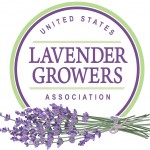HSA Lavender Fact Sheet
The Herb Society has short facts available. The longer “Facts for Lavender” factsheet by The Herb Society of America is no longer publicly available.
Read MoreLavender Varieties
by Donna Anderson of Lavender Acres First time visitors to a lavender farm frequently exclaim, “I thought it was just a purple bush!” Even enthusiasts are amazed to find out how many varieties exist. Currently there are over 45 different species with over 450 varieties. More lavender species/varieties have yet to be classified. Lavender belongs to the genus Lavandula. In Northern latitudes the two most common species are angustifolia and x intermedia (also called lavandin). Lavandin is a cross between L. angustifolia and L. latifolia. Generally speaking, lavandins have longer stems and...
Read MoreSoil Preparation for Lavender
Curtis Swift, Ph.D. High Altitude Lavender, Curtis.Swift@alumni.colostate.edu Soil preparation for Lavandula is critical for the long term survival of the plantation. Neglecting to prepare the soil properly will reduce the longevity and yield of the crop. Introduction: An ideal soil is considered to consist of 45% mineral (sand, silt, and clay), 5% organic matter, and 50% pore space. The pore space provides the oxygen and water necessary for plant growth. Oxygen is necessary for root respiration with research showing the ambient air level (~21% O2) which we breathe is equally beneficial and...
Read MoreLavender Harvesting Techniques Invented
by Lila Avery-Fuson, Central Coast Lavender Farm ‘Harvest is the process of gathering mature crops from the fields. Reaping is the cutting of grain or pulse for harvest, typically using a scythe, sickle, or reaper. The harvest marks the end of the growing season, or the growing cycle for a particular crop, and social importance of this event makes it the focus of seasonal celebrations such as a harvest festival, found in many religions. On smaller farms with minimal mechanization, harvesting is the most labor-intensive activity of the growing season.’From Wikipedia It always...
Read MoreOrganic 101 & 201
To be certified or not to be certified organic; that is the question. In reality, this can be a difficult decision. There are compelling arguments for and against becoming a certified organic grower. Likewise, there are alternative options to the certified organic route. For example, Certified Naturally Grown. Ultimately, this decision rests squarely on you, the grower. Your personal beliefs, customer base, financial plan, business strategy and the size of your operation all come into play when deciding if certified organic is for you or not. Not everyone is going to agree, and not everyone...
Read More